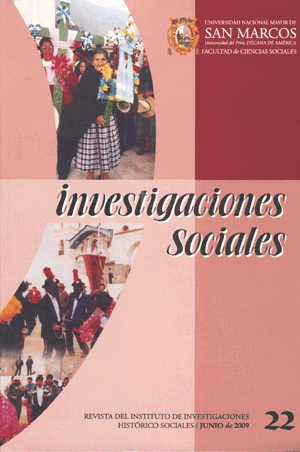Feast of the Crosses, the Christian-native syncretism expresión
DOI:
https://doi.org/10.15381/is.v13i22.7247Keywords:
Syncretism, ethnicity, religion, crosses, holy Catholic and Andean.Abstract
In the present article examines the long and difficult process that followed the Spaniards to evangelize and indoctrinate the Andean population from the moment of conquest, with crosses, saints, virgins and the Christ. Moreover, the Indians together in villages reduction, conducting meetings for the Conciliar repression manifested in the extirpation of idolatries. The natural resistance that people from their enslavement to their tutelary gods, their Pacarinas, huacas and their priests or priestesses. Imposition by the Spanish cultural events took place that gradually accepted by the Catholic Church, as a habit of leaving the Andean peoples. One of these was the great popular festival in Huamantanga, Canta, known as the Feast of the Cross held on January 6 of each year. This feast is linked to the farming communities and linked to the agricultural calendar of the people of the Peruvian countryside. Corresponds to the beginning of the rains, the sowings, of the thunder, the lightning and the hail. Locals consider the holidays as a Catholic origin. This was causing the religious syncretism in Peru.Downloads
Published
Issue
Section
License
Copyright (c) 2009 Bernardino Ramirez Bautista

This work is licensed under a Creative Commons Attribution-NonCommercial-ShareAlike 4.0 International License.
AUTHORS RETAIN THEIR RIGHTS:
a. Authors retain their trade mark rights and patent, and also on any process or procedure described in the article.
b. Authors retain their right to share, copy, distribute, perform and publicly communicate their article (eg, to place their article in an institutional repository or publish it in a book), with an acknowledgment of its initial publication in Investigaciones Sociales.
c. Authors retain theirs right to make a subsequent publication of their work, to use the article or any part thereof (eg a compilation of his papers, lecture notes, thesis, or a book), always indicating the source of publication (the originator of the work, journal, volume, number and date).













